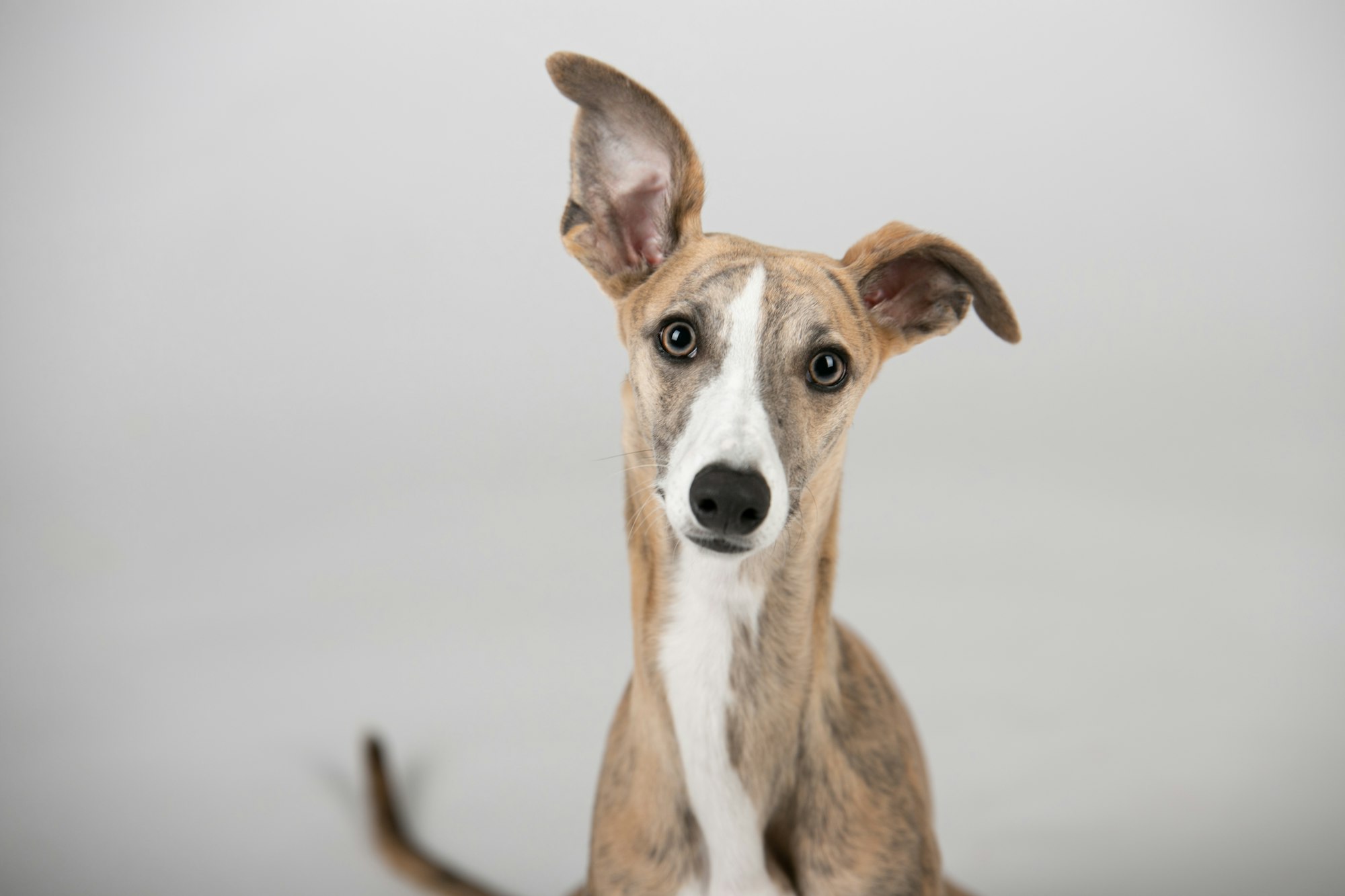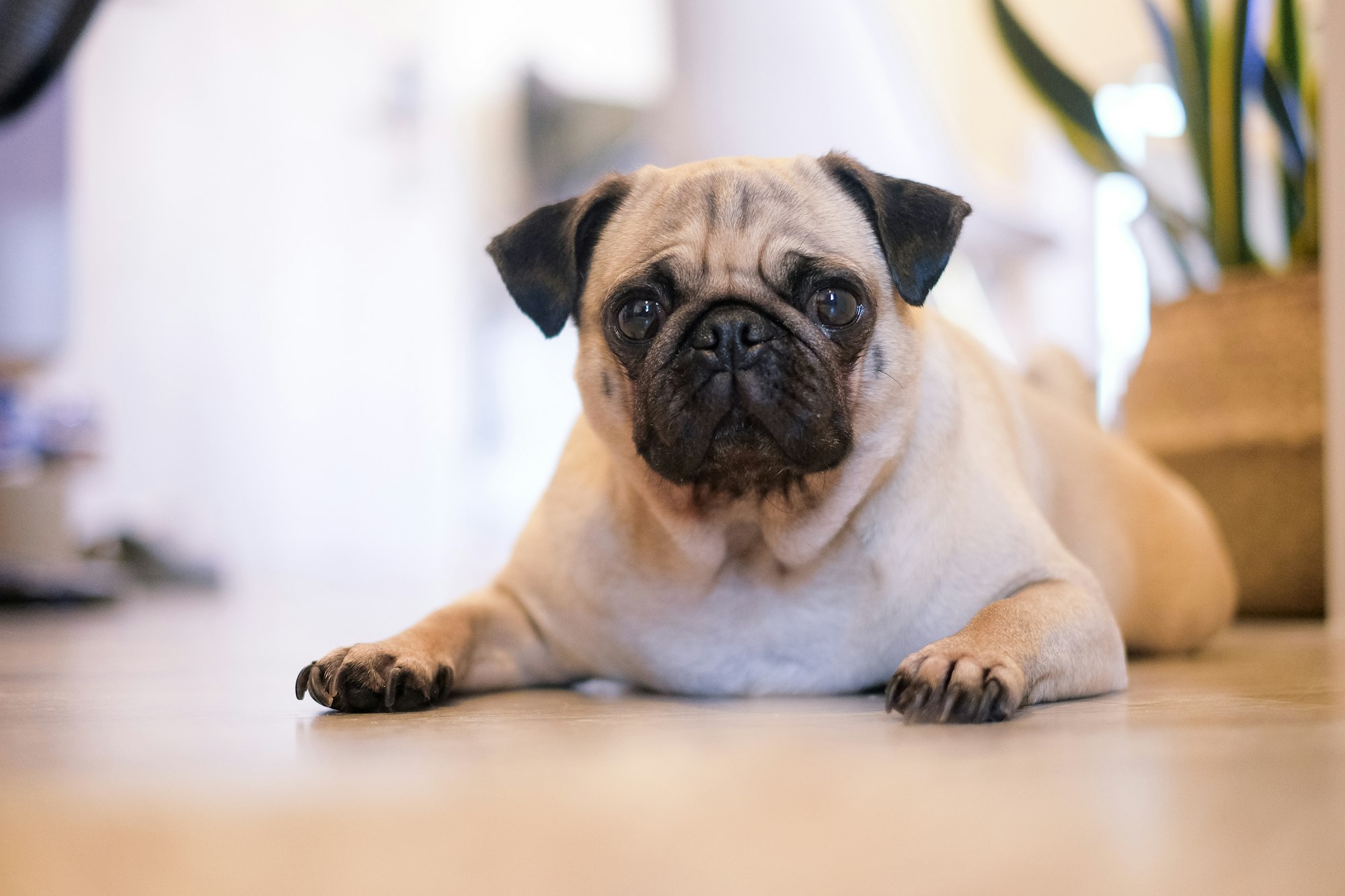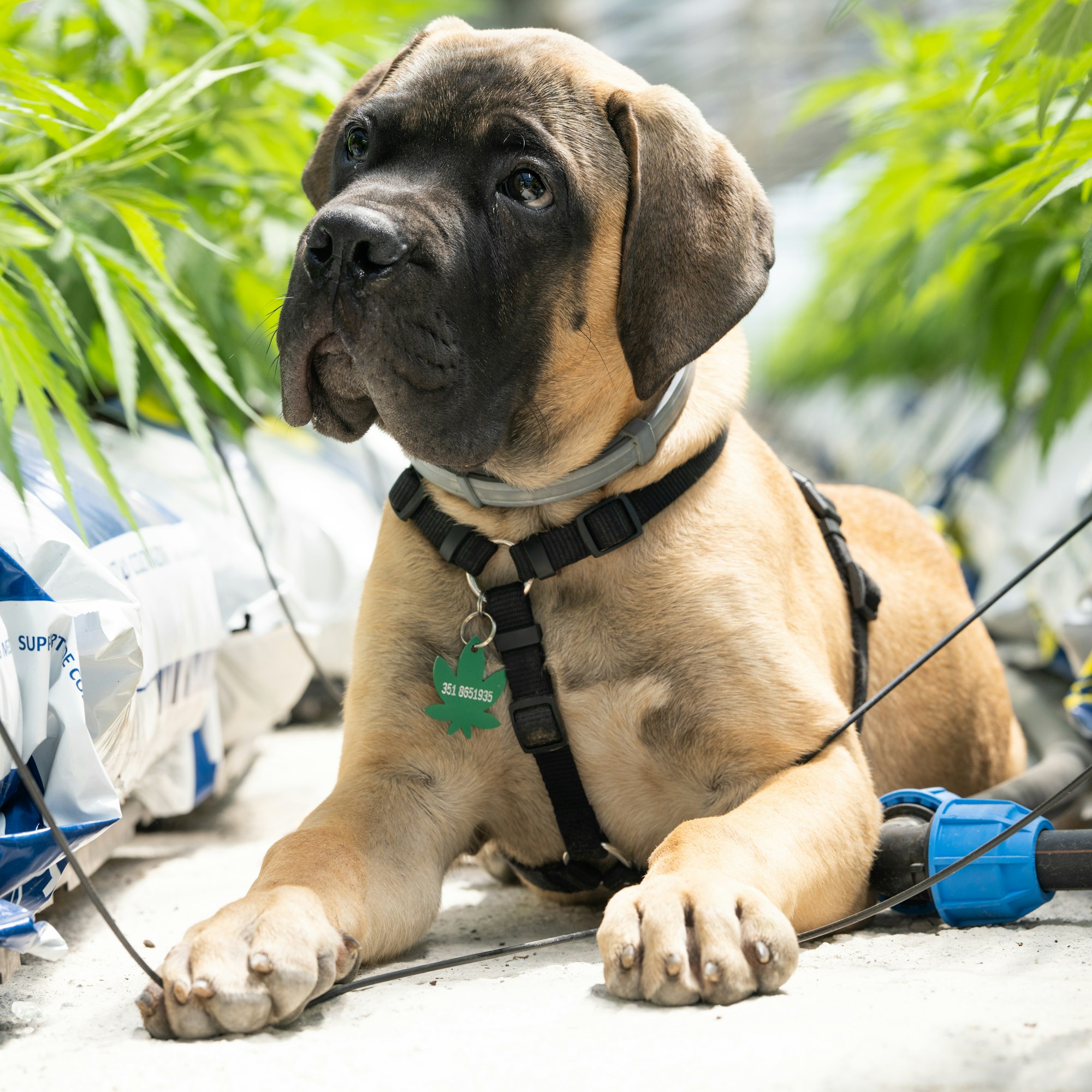In a world where energy levels seem to be constantly skyrocketing, choosing a low-energy dog breed might feel like a misstep. Yet, it is an undeniably strategic move for a more balanced, tranquil lifestyle.
This article explores the top 12 low-energy dog breeds, ideal companions for those seeking a less strenuous pet ownership experience. We'll dive deep into the nuances of these breeds, their specific needs, and why they might be your perfect furry friend.

Considerations Before Getting a Low-Energy Dog
Before choosing a low-energy dog, it's pivotal to reflect on your lifestyle, assessing whether you can provide adequate care, love, and mental stimulation.
It's also crucial to consider the compatibility of a dog's socialization needs with your availability, as even low-energy breeds require companionship.
Lastly, remember that each dog is unique, and thorough research on individual temperaments can greatly influence the success of your canine adoption.
1. Lifestyle Evaluation
Understanding an individual's lifestyle is crucial in making an informed decision about whether adopting a dog aligns with their daily routine.
A dog's well-being heavily relies on the owner's commitment to providing affection, regular grooming, training, and mental stimulation. This process, known as lifestyle evaluation, is a fundamental step when considering getting a dog.
It helps to forecast whether one can fulfill the commitment and responsibility of dog ownership. Dogs, even those of low-energy breeds, need more than food and shelter.
They require mental enrichment and grooming to maintain their health and happiness. Therefore, a thorough lifestyle evaluation should be the cornerstone of adding a four-legged companion.
2. Compatibility with Alone Time
In dog ownership, it is paramount to consider the fairness of leaving a dog, even those belonging to low-energy breeds, alone for extended periods, given their inherent need for socialization and companionship.
- Low-Energy Dog Breeds: These breeds require fewer exercises but still crave human interaction. They are not immune to loneliness and stress when left alone for long periods.
- Compatibility with Alone Time: Assess your lifestyle and the dog's breed characteristics before deciding. Some dogs are more independent, but no dog should be isolated consistently.
- Socialization and Companionship for Dogs: Dogs are pack animals. They thrive in a communal setting and suffer mentally and emotionally when company-deprived. Consider pet services or doggy daycare options if necessary.
This is a complex issue that requires responsible consideration.
3. Individuality of Dogs
Despite the general classifications for energy levels associated with specific breeds, every dog possesses a unique individuality. Therefore, potential dog owners are urged to conduct thorough research before bringing a new pet into their homes to ensure it meets their expectations.
Not every dog will embody the typical energy level of its breed. Just as humans exhibit a range of temperaments, the individuality of dogs is vast and varied. This complexity necessitates a deeper understanding for future dog owners.
You must research thoroughly, considering the breed's general traits and the potential divergence of an individual dog's energy level. Doing so will enable you to foster a harmonious relationship with your future canine companion.

Adopting a Senior Dog for a Low-Energy Companion
Adopting a senior dog can be an excellent option for those seeking a low-energy companion. This choice not only provides a deserving senior dog with a loving home but also eliminates the vigorous time commitment required for training and socializing puppies.
We'll explore the unique benefits of adopting senior dogs, from their reduced exercise requirements to their established behaviors, contributing to a more relaxed lifestyle.
1. Puppies vs. Senior Dogs
Concerning the ongoing debate on puppies versus senior dogs. One should consider the substantial time and commitment involved in training and socializing puppies, irrespective of their energy levels.
And contrast this with the potential advantages of welcoming an older dog into the home, given their typically lower exercise needs and better self-understanding of their energy levels and requirements.
- Time and commitment: Puppies require substantial training and socialization despite their energy levels. This often involves a significant time commitment.
- Lower Energy Levels: Senior dogs generally have lower exercise requirements, which may suit a more relaxed lifestyle.
- Understanding and Needs: An older dog often has a better self-understanding of their energy requirements, leading to fewer surprises and a more predictable routine.
One should weigh these considerations carefully in the puppies vs. senior dogs debate.
2. Benefits of Adopting a Senior Dog
Many may overlook that senior dogs, often languishing in shelters for extended periods, deserve a peaceful retirement in a caring home and can make excellent low-energy companions.
Long past their energetic youth, these dogs make perfect pets for those seeking quieter companionship. Adopting a senior dog isn't just an act of kindness; it's a choice that brings mutual benefits.
Senior dogs typically require less exercise and are content with more relaxed lifestyles. They've often had training, making them easier to manage. They've lived and learned, and now all need a comfortable retirement in a loving home.
Choose Tranquility and Track it with Fi
For those who value a calm and serene home life, selecting a low-energy dog breed is a step towards a more balanced lifestyle. Ensure your tranquil companion’s safety and well-being with the Fi Dog Collar. Equipped with advanced GPS tracking and geofence capabilities, this collar allows you to monitor your furry friend’s whereabouts and ensure they are safe, whether napping indoors or exploring the backyard.
The Fi app provides real-time updates and activity monitoring, blending seamlessly into your peaceful life with your new pet. Embrace the laid-back companionship of a low-energy dog and enhance it with the security and innovation of the Fi Dog Collar. Visit TryFi.com to find out how you can safeguard your serene sidekick today.
Factors to Consider When Choosing a Low-Energy Dog Breed
Selecting a low-energy dog breed may seem straightforward, but considering several factors requires thoughtful consideration.
It is crucial to remember that energy levels can vary even within a breed, making it essential to consider a dog's specific requirements and compatibility with your lifestyle.
Moreover, irrespective of a dog's energy level, ownership comes with responsibilities such as grooming, training, and providing mental stimulation, which should not be underestimated.
1. Energy Level Variations
Despite the general categorization, it is important to note that the energy levels can vary significantly within the same breed. Making it crucial to consider a dog's specific needs and compatibility with your family and lifestyle before deciding.
- Low-energy dog breed: Not all dogs within a low-energy breed will be couch potatoes. Some may have a higher energy level due to individual personality or health factors.
- Energy level variations: A dog's energy level can also be influenced by age, training, and diet.
- Suitability of a breed: It's not just about how much a dog can run or play. The suitability of a breed also includes factors like temperament, size, and coat type.
2. Responsibilities of Dog Ownership
As potential dog owners, we must not underestimate the responsibilities that come with a pet. Even low-energy breeds require ample attention, love, grooming, training, and mental stimulation to thrive in a domestic environment.
The responsibilities of dog ownership extend beyond just providing food and shelter. It involves understanding the dog's needs, providing regular grooming to maintain their health, and investing in their training to ensure good behavior.
Mental enrichment, often overlooked, plays a significant role in a dog's contentment. Therefore, dog ownership demands encompass the pet's physical, psychological, and emotional well-being. The joys of dog ownership are plentiful, but they come with a caveat: a commitment to their lifelong care.
Top 12 Famous Low Energy Dog Breeds
In this section, we will explore 12 renowned low-energy dog breeds that could be ideal for a more relaxed lifestyle.
From the couch-loving Greyhound to the independent yet calm Chow Chow. Despite their diverse characteristics, these breeds share a common trait - lower exercise requirements.
Below we can also discuss each breed's unique traits and health considerations. And care needs to give you a comprehensive understanding of what it takes to ensure their well-being.
1. Greyhound

During their downtime, Greyhounds, known for their generally low-energy temperament, are suitable for apartment living and are often regarded as couch potatoes.
However, they require frequent companionship and caution should be taken with their compatibility with cats.
Below are some key facets of the Greyhound breed:
- Low-energy: Despite their racing history, Greyhounds enjoy lengthy rest periods, making them ideal for apartment living.
- Couch potato: These dogs are content lounging about and require less exercise than other breeds.
- Need for company: They crave companionship and thrive when in the company of their owners.
Nevertheless, while Greyhounds can coexist peacefully with cats, careful introductions and monitoring are essential due to their innate prey drive. This unique blend of traits makes Greyhounds ideal for those seeking a low-energy pet.
2. Basset Hound

While Basset Hounds are renowned for their laid-back nature and low exercise requirements, it is essential to emphasize the need for daily walks and necessary precautions to prevent ear and joint problems.
This breed's placid demeanor is part of its charm, but don't be fooled by its serene facade. Their long, floppy ears require regular cleaning to prevent infections.
Their unique skeletal structure, notably their short legs and long body, lends them to joint problems. Therefore, their exercise routine should be gentle yet consistent. A daily walk helps maintain a healthy weight and keeps their joints flexible. Opt for a slow-paced stroll rather than a vigorous run.
3. Pug

Although Pugs have a distinct and endearing personality that often captures people's hearts. Their brachycephalic (flat-faced) breed nature necessitates low exercise requirements and predisposes them to common health conditions.
Such as respiratory, eye, and skin problems. Pugs are the epitome of a low-energy dog, perfectly content with minimal exercise.
- Brachycephalic Syndrome: The pug's flat face contributes to respiratory problems, making strenuous exercise difficult.
- Eye issues: Protruding eyes are susceptible to injuries and infections.
- Skin Disorders: Their skin folds are prone to infection if not regularly cleaned.
Despite their health challenges, these dogs' charming personalities and low-energy nature make them ideal companions for a relaxed lifestyle.
4. Cavalier King Charles Spaniel

The Cavalier King Charles Spaniel, known for its adaptability and gentle nature, is another low-energy breed that requires minimal exercise, making it one of the top choices for family pets.
This breed embodies the quintessential family dog, thriving in various environments due to its adaptability. Its low exercise requirements make it perfect for families with a relaxed lifestyle.
Unlike more vigorous breeds, the Cavalier King Charles Spaniel doesn't demand hours of play, instead, they prefer cuddling on a cozy couch.
However, like all breeds, these dogs carry specific genetic health problems, underscoring the importance of responsible breeding.
5. Chow Chow

Cherishing a reputation for loyalty and calmness, Chow Chows are another breed with low exercise requirements. However, their aloof and independent nature necessitates extra support in training and socialization. Regular grooming to maintain their lush coat, and makes them less suitable for novice dog owners.
This majestic breed, known for its lion-like appearance and blue-black tongue, is part of the low-energy dog breeds. Their unique characteristics require a specialized approach:
- Training and Socialization: Chow Chows are intelligent but stubborn. They need consistent, positive reinforcement training from an early age.
- Regular Grooming: Their dense double coat needs regular brushing to prevent matting and skin issues.
- Owner Experience: Their aloof and independent nature can be challenging, making them better suited to experienced owners.
In essence, Chow Chows are an intriguing blend of tranquility and tenacity.
6. Pekingese

Transitioning from the Chow Chow, we now focus on the Pekingese. Small and affectionate dogs are known for their low-energy and stubborn streak, requiring reward-based training and regular grooming.
Despite their diminutive size, these dogs have a tenacious spirit, often displaying an independent nature that can make training challenging. Their stubbornness can be mitigated through consistent, reward-based training methods that encourage positive behavior.
Regular grooming is also essential to maintain their luxurious coat and to prevent skin issues. Despite being a low-energy breed, Pekingese thrive on short, leisurely walks.
Still, caution should be exercised during hot weather due to their susceptibility to heat stroke, a health issue linked to their distinct brachycephalic (short-nosed) face shape.
7. Whippet

Whippets are markedly friendly and easygoing compared to other breeds, making them an excellent choice for families. However, it's important to remember that these dogs require moderate exercise and should not be left alone for extended periods.
- Whippets as Family Pets: Their friendly demeanor and ability to adapt well to various environments make them ideal family pets. They are known for their gentle disposition and exceptional tolerance towards children.
- Exercise Needs: Whippets require a moderate amount of exercise. Regular walks or play sessions in a secure area suffice for their energetic needs.
- Solitude Sensitivity: Being social creatures, Whippets should not be left alone for long durations. Their sensitivity towards isolation can lead to anxiety.
Whippets, with their unique traits, are a wonderful addition to any family.
8. French Bulldog

Despite their charming, playful, and affectionate nature, French Bulldogs, often called 'Frenchies,' require careful breeding due to their propensity for certain health conditions.
This necessitates regular health checks and careful monitoring, especially in hot weather. Frenchies also have specific grooming needs that need to be addressed. As a brachycephalic breed, French Bulldogs are more vulnerable to respiratory issues.
Their small size and minimal exercise needs make them an ideal low-maintenance dog for urban dwellers. Despite being classified as lazy dogs, they thrive on companionship and mental stimulation.
Regular grooming is essential for French Bulldogs. This includes cleaning their folds and maintaining a healthy weight to prevent skin infections and other health complications.
When these needs are met, a French Bulldog proves to be a delightful, loyal companion.
9. Shih Tzu

Shih Tzus, known for their sociable and adaptable nature, require moderate exercise, with two short walks per day often sufficing to keep them healthy and content. Care should be taken when exercising in hot weather, as this breed can be susceptible to heat exhaustion.
The Shih Tzu breed has three key factors to consider for their well-being:
- Moderate Exercise Requirements: Despite their small size, regular physical activity is essential for maintaining good health.
- Regular Coat Maintenance: Their long, flowing coats require frequent grooming to prevent matting and skin problems.
- Common Health Problems: Shih Tzus can face issues like dry eyes and back problems, needing regular vet checks for early diagnosis.
With their friendly demeanor and manageable exercise needs, these royal canines make for ideal companions.
10. Mastiff (English and American)

English Mastiffs, renowned for their low exercise requirements and seemingly lazy disposition, are often described as gentle giants, frequently characterized by their loyal and loving nature. Yet, without proper socialization, they can exhibit territorial or guarding behavior.
This lazy dog breed is generally low maintenance, needing less vigorous activity than more energetic breeds. However, their stature as guard dogs doesn't mean they need a lot of exercise. Physical activity must be balanced to prevent weight gain, and drool management is essential due to their jowly nature.
American Mastiffs share similar traits, making them suitable for a relaxed lifestyle. Despite their lazy dog labels, Mastiffs offer immense loyalty and affection, making them an excellent companion for those seeking a low-energy yet protective pet.
Frequently Asked Questions
What Are Some Common Health Issues Associated With Low Energy Dog Breeds?
Low-energy dog breeds often experience obesity due to less physical activity. They may also suffer from joint problems like hip dysplasia, heart diseases, and brachycephalic syndrome, especially in flat-faced breeds. Regular vet checkups are crucial.
How Can I Properly Train a Low Energy Dog?
Training a low-energy dog requires patience and consistency. Regular, gentle exercise paired with positive reinforcement can be effective. Tailoring activities to their energy level and providing mental stimulation will also aid in successful training.
Can Low Energy Dog Breeds Get Along With Other Pets?
Yes, low-energy dog breeds can typically coexist harmoniously with other pets. Their laid-back nature makes them less aggressive and more adaptable, facilitating a peaceful environment for multi-pet households. However, individual temperaments can vary.
How Often Do I Need to Take My Low Energy Dog for a Vet Check-Up?
Low energy dogs should have routine veterinary check-ups at least once a year. However, for senior dogs or those with health issues, more frequent visits every 6 months might be recommended by your vet.
Are There Any Specific Dietary Requirements for Low Energy Dog Breeds?
Low energy dog breeds typically require a balanced diet but may need fewer calories than active breeds. Portion control is crucial to avoid obesity. Consult with a vet for personalized dietary advice.
Conclusion
Selecting a low-energy dog breed can significantly enhance one's relaxed lifestyle. These breeds provide companionship without the demand for high physical activity.
It is crucial to consider individual breed characteristics, health conditions, and age while selecting. The right choice can lead to an enriching companionship, providing solace and comfort in today's fast-paced world.
Remember, every dog deserves love and care, irrespective of their energy level

